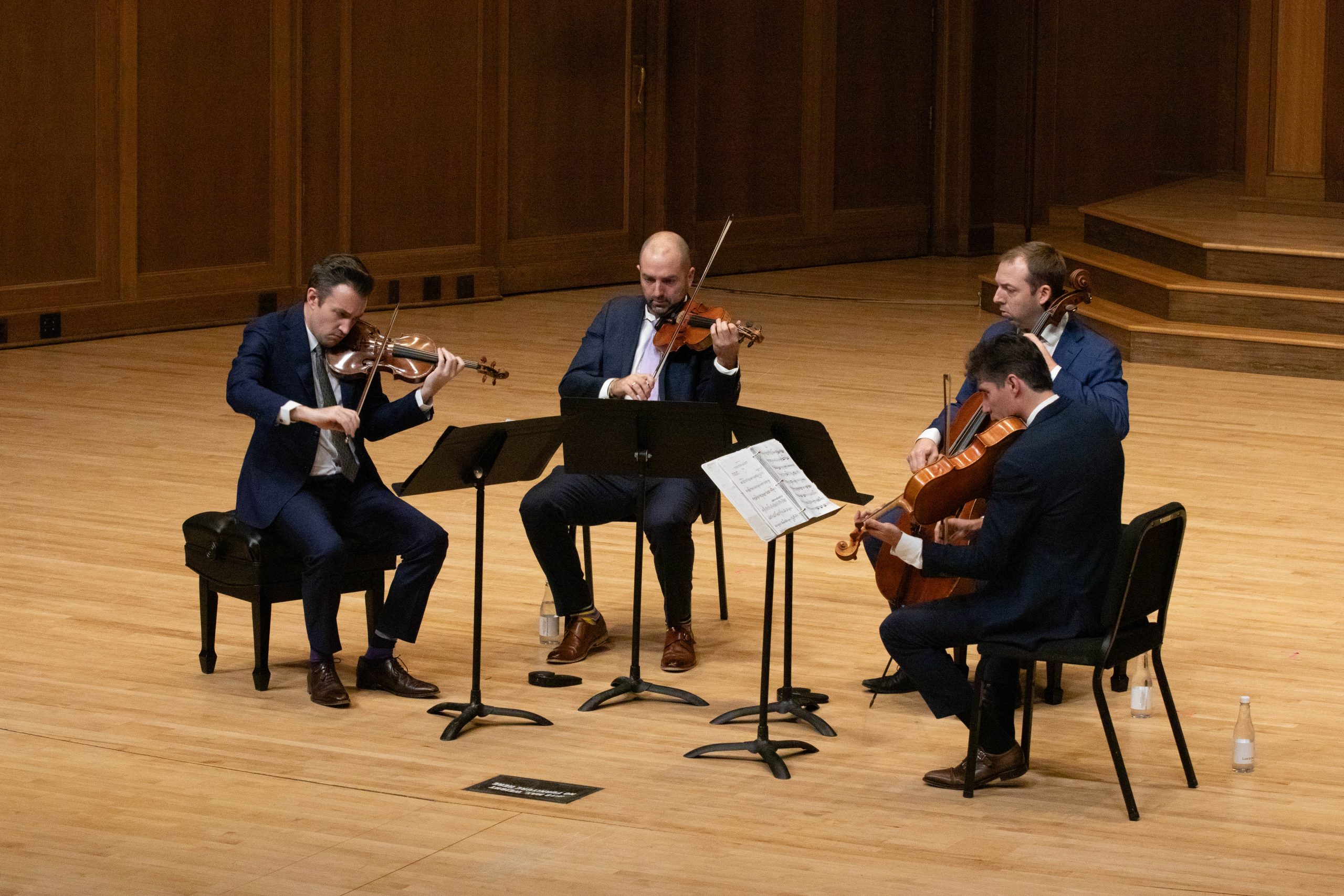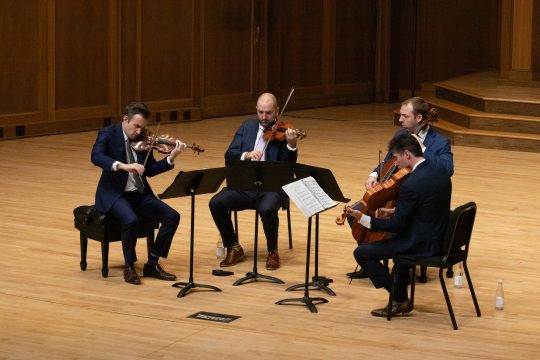There are few genres which can unite composers as diverse as Joseph Haydn, Belá Bartók and Maurice Ravel. Spanning multiple centuries and nations, each has written customary piano works, but one unique genre unites them all: the string quartet. All three composers were featured this past Friday, Feb. 2, when the Escher String Quartet took the Memorial Chapel stage.
The quartet included Adam Barnett-Hart and Brendan Speltz on violin, Pierre Lapointe on viola and cellist Brook Speltz. Strictly speaking, only the Speltz brothers were family members, but the ensemble-wide cohesion was impressively familial. As is customary, Barnett-Hart typically led passages as the first violinist, but he freely stepped aside during the solos of others.
The group began with the Quartet in D Major, “The Lark,” by Joseph Haydn, affectionately referred to as “Papa Haydn” by Barnett-Hart. Indeed, Haydn has secured a founding-father persona for his prolific efforts to promote both the string quartet and the symphony.
Although opening with a dainty lilt, the violin entered with a strikingly elegant melody. The Escher Quartet was at their best with the cello pedal textures—where the cello held a single low note, and the other parts danced gracefully above. The luscious, rich sound achieved in the second movement was also memorable.
For the catchy and playful minuet movement, the ensemble brought a strangely serious vigor. The interpretation may have merit in isolation but made the following movement redundant, since it was also treated with serious vigor.
Bartók’s fierce fourth string quartet was next. Described by Barnett-Hart as a musical palindrome, the work was built on a reoccurring formal structure. The opening movement balanced pitch and rhythmic clusters, turning opposing ideas into a single idea themselves.
The following movements evoked distinct emotional textures, masterfully delivered by the quartet: the slyly swirling second movement, the meditative-yet-soloistic third movement, the grotesquely pulsating fourth movement and the brutal dance of the fifth movement. For the last of these, the Escher Quartet brought so much aggression that their instruments could be heard rattling.
To close their program, the musicians chose Ravel’s only string quartet, written early in the composer’s career. As it is among the most popular string quartets, ensembles often go to great lengths to stand out in their interpretations. Often this has superficial results, but just as often it spawns fascinating performances.
Although the first movement was tightly constructed, the ensemble thoughtfully approached each phrase. The ensemble’s insistent rubato gave the movement a certain magic, as if it was being composed while it was performed.
The whirling second movement was given effective energy, but never spun out of control. Given that the first, second and final movements were on the quicker side, the third movement was a most welcome opportunity for a moment of slowness. Unfortunately, the Escher Quartet opted for a faster interpretation, which seemed to disjoint the performance. Regardless, the finale was played with expert precision and was given a fittingly exciting climax.
The string quartet holds a special place in Western music. With a deceivingly simple combination of two violins, a viola and cello, the formation may appear lackluster from an ineffective performance. Thankfully, the Escher Quartet delivered remarkable musicality, which was consistently interesting and tasteful.


